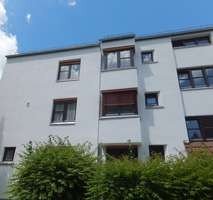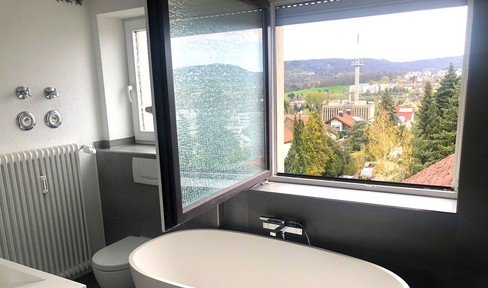
This page was printed from:
https://www.ohne-makler.net/en/properties/
Commission-free real estate directly from the owner
Find your commission-free real estate property from 5454 offers
Compared with Western and Central Europe, Germany is still relatively inexpensive
Compared with the situation on the real estate market in many other Central and Western European countries, which has been similar for a good two to three decades - very high prices and very rapid appreciation of properties - the current market situation in Germany is still characterized by a rather moderate price structure, despite the fact that prices have also risen sharply or are still rising. In the major cities of Munich, Hamburg, Cologne, Berlin, Stuttgart and Frankfurt am Main in particular, average prices per square meter have risen by double-digit percentages in some cases, as they have in almost all other major cities such as Hanover, Karlsruhe, Münster, Düsseldorf, Nuremberg, Mainz and Regensburg. However, unlike in France, Italy, England and Switzerland, for example, where prices have now reached almost dizzying heights not only in the respective capitals but also in medium-sized cities, and in good to very good locations one can expect prices of up to no less than 75.000 euros/m² in Hyde Park in London, for example, or around 10,000 euros/m² in the centers of Zurich, Geneva, Rome, Milan and Venice, you can still find affordable apartments and houses in good to better locations in Germany's cities with prices between around 1,000 and 2,000 euros/m².
Since 2011, the larger cities and metropolitan areas have become much more expensive.
But of course, even between the North Sea and the Alps, there are now extremely expensive areas by German standards for buying housing, which are slowly but surely coming into line with international levels in terms of price. For example, on the fashionable island of Sylt with up to almost 13,000 euros/m² in Kampen, in Hamburg or Düsseldorf's old town with up to 8,000 euros/m², in Munich's Schwabing district with over 7,000 euros/m² or in Stuttgart-Nord with over 6,000 as well as in Freiburg-Herdern with almost 5,500 euros/m². With prices between 7,000 and almost 8,000 euros/m², the old town of Frankfurt am Main or the Westend-Nord district are certainly not good areas for low-income earners, and the same is also true of Heidelberg-Neuenheim (approx.6000 euros/m²), Münster's Schlachthofviertel (approx. 4,500 euros/m²), Cologne-Marienburg (approx. 4,800 euros/m²) or the Lake Constance area, where in Constance, for example, average apartment prices for a 100 m² apartment are already over 5,000 euros/m². All the larger Bavarian cities in particular, such as Regensburg and Nuremberg, are also not exactly inexpensive, with apartments in the city center sometimes asking between 4,500 and 5,000 euros/m². The German capital Berlin has seen prices rise equally sharply in recent years, with the most expensive districts and neighborhoods being Dahlem (Zehlendorf), Grunewald (Wilmersdorf) and Mitte, with a price range currently between 4,000 and 4,800 euros/m².
With the exception of the Ruhr region, western Germany is more expensive than eastern Germany
However, outside the usually expensive larger cities and within more rural regions, it is still possible to find and be satisfied with a smaller budget when looking for a condominium or single-family home in Germany. German regions known for low real estate prices are, for example, northern Saxony, southern Brandenburg, almost the entire state of Mecklenburg-Western Pomerania as well as the state of Saxony-Anhalt, the southwest of Rhineland-Palatinate and the northeast of the otherwise rather expensive Baden-Württemberg. In general, residential property prices west of the Elbe are higher than those east of it. The only exceptions to this are the very dynamic city of Dresden, where the current average property purchase price of a good 2,700 euros/m² is already higher than that of the Federal Republic of Germany of just under 2,500 euros/m², and in some sought-after locations such as Loschwitz/Wachwitz, at around 3,800 euros/m², almost as much is paid for apartments as in the expensive Rhineland. Even Leipzig, with its average price of a good 1,800 euros/m², already has prices of almost 3,000 euros/m² in some locations in the center. However, the majority of other eastern German cities and municipalities are considerably cheaper, such as Stendal (approx. 1,000 euros/m²), Chemnitz (approx. 1,200 euros/m²), Magdeburg (approx. 1,400 euros/m²), Erfurt (approx. 1,900 euros/m²), Schwerin (approx. 1,900 euros/m²) and Rostock (approx. 2,300 euros/m²). Good opportunities with favorable offers are also still available in the central Ruhr area. Cities such as Herne (approx. 1,000 euros/m²), Duisburg and Gelsenkirchen (approx. 1,100 euros/m² each), Oberhausen (approx. 1,200 euros/m²), Hamm, Bottrop and Bochum as well as Recklinghausen (approx. 1,500 euros/m² each) offer low prices, and Dortmund is also still relatively affordable with a current average of approx. 1,800 euros/m².
Summary of the real estate market in Germany:
- Compared with other cities in Europe, expensive German locations are still "cheap"
- The most expensive German cities are Munich, Hamburg, Düsseldorf and Frankfurt
- Strong price increases also in medium-sized cities such as Hanover, Münster and Karlsruhe
- The German capital Berlin is becoming increasingly desirable and therefore significantly more expensive
- With the exception of Dresden and Leipzig, the east is cheaper than the west
- Low prices still in Saxony, Thuringia and Mecklenburg-Western Pomerania
- Many cities in the Ruhr region also still have very favorable offers
Properties to Rent
Properties for Sale
Choose a State
Baden-Württemberg Bayern Berlin Brandenburg Bremen Hamburg Hessen Mecklenburg-Vorpommern Niedersachsen Nordrhein-Westfalen Rheinland-Pfalz Saarland Sachsen Sachsen-Anhalt Schleswig-Holstein ThüringenDiese Seite wurde ausgedruckt von:
https://www.ohne-makler.net/en/properties/





